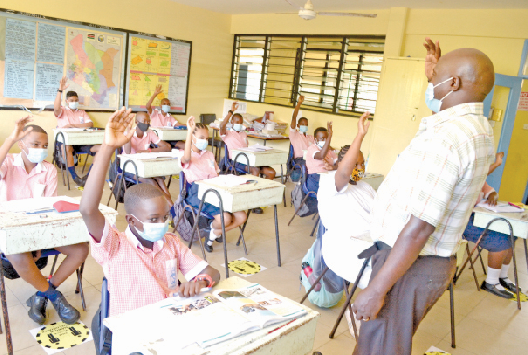Unplanned infrastructure hurts basic education

Kenya’s primary and secondary school infrastructure plays a vital role in ensuring quality education by enhancing student development, teacher effectiveness, and overall learning conditions.
The government has committed to free and compulsory basic education to improve literacy and socio-economic growth. However, a surge in student enrollment has outpaced infrastructure development, leading to overcrowded classrooms, inadequate learning materials, and deteriorating facilities.
Many public schools now resemble slums due to lack of planning, creating a dire learning environment and raising serious concerns about the future of education in Kenya. Urgent intervention is needed to address this crisis.
The introduction of the Free Primary Education (FPE) policy and the 100% transition to secondary school initiative has put immense pressure on the already strained education infrastructure. Many schools struggle to accommodate the growing number of students, with some classrooms holding more than 100 learners. The haphazard implementation of the Competency-Based Curriculum (CBC) has further worsened the situation, as schools lack the necessary facilities to support its requirements.
The effects of inadequate education infrastructure extend beyond physical discomfort. Bloated classrooms hinder effective teacher-student interaction, compromising the quality of instruction. High student-to-teacher ratios mean that learners receive minimal individual attention, negatively affecting their comprehension and overall academic performance.
Furthermore, the lack of proper sanitation facilities in many schools poses serious health risks, increasing the likelihood of disease outbreaks. Poorly constructed classrooms also present significant safety hazards to users in schools. These unfavorable conditions contribute to declining learning outcomes and rising dropout rates.
Several factors have contributed to the deteriorating state of Kenya’s basic education infrastructure. Rapid urbanization and population growth have placed immense pressure on schools, as the unchecked expansion of urban settlements has led to an overwhelming increase in student numbers. Many institutions struggle to accommodate these rising enrollments, resulting in overcrowded classrooms and strained resources. Schools are built without long-term strategic site planning, leading to uncoordinated expansion.
Budgetary constraints, coupled with mismanagement and corruption in infrastructure projects, have severely affected the quality and equitable distribution of resources. The grabbing of school land has also contributed to the worsening conditions, leaving schools without sufficient space for expansion.
Also, the lack of coordination between national and county governments has created inefficiencies in infrastructure development and maintenance, leading to widespread neglect of schools.
Students in rural and marginalised areas have been particularly affected, with many abandoning their education due to the harsh and discouraging learning environment. Schools in informal settlements such as Kibera and Mathare face immense challenges due to inadequate infrastructure. Without sufficient classrooms, desks, and sanitation facilities, the quality of education in these areas remains severely compromised.
As an education expert, I wish to highlight the direct link between poor infrastructure and declining learning outcomes. Inadequate school facilities not only affect student performance but also contribute to widening educational inequalities. Children from underprivileged areas struggle to compete with their counterparts in well-equipped institutions, further deepening the divide in access to quality education enshrined in the Constitution.
To improve Kenya’s education infrastructure, the government and stakeholders must adopt strategic planning and targeted investment to match school construction with enrolment growth. Strengthening policy implementation and accountability is essential in curbing corruption and inefficiencies in education funding.
The writer is a Professor of Chemistry at the University of Eldoret, a former VC, and a Quality Assurance Consultant.














